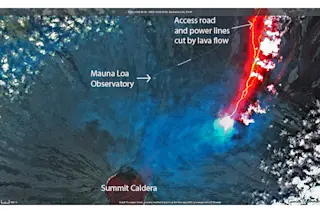The holidays are hard on Christmas lights. Exposed to the vagaries of small nephews and exuberant pets, most strings will experience a few casualties, and while a missing bulb no longer means the entire set stops working, Americans still throw out millions of pounds of lights a year. Adam Minter, who's writing a book on the globalization of recycling, describes exactly what happens to your old lights when they're shipped over to a concern in China, which, ironically, makes better use of minced-up lights than any US company could.
Workers untangle the lights and toss them into small shredders, where they are chopped into millimeter-sized fragments and mixed with water into a sticky mud-like substance. Next, they're shoveled onto a large, downward-angled, vibrating table, covered in a thin sheen of flowing water. As the table shakes, the heavier flecks of copper (from the wire) and brass (from the light bulb sockets) flow in one direction, and the lighter plastic and glass (from the insulation and bulbs) flows in another. It's the same concept that miners use when panning for gold, and the results of this updated, age-old technology can be found at the far end of the water tables: baskets of roughly 95% pure copper and brass alongside baskets of insulation and glass. The contaminated water, meanwhile, flows into a recovery system, where it's re-circulated, over and over, through the recycling system.
Recyclers in China, Minter explains, actually reclaim more of Christmas lights' component parts than American recyclers do. Copper has good resale value in the US, but the plastic insulation, which is used to make slipper soles in China, and mixed copper and brass pieces, which the Chinese refine for use in manufacturing, have no market in the United States. So American companies send them to the landfill, while the Chinese sell them on to be used again.













